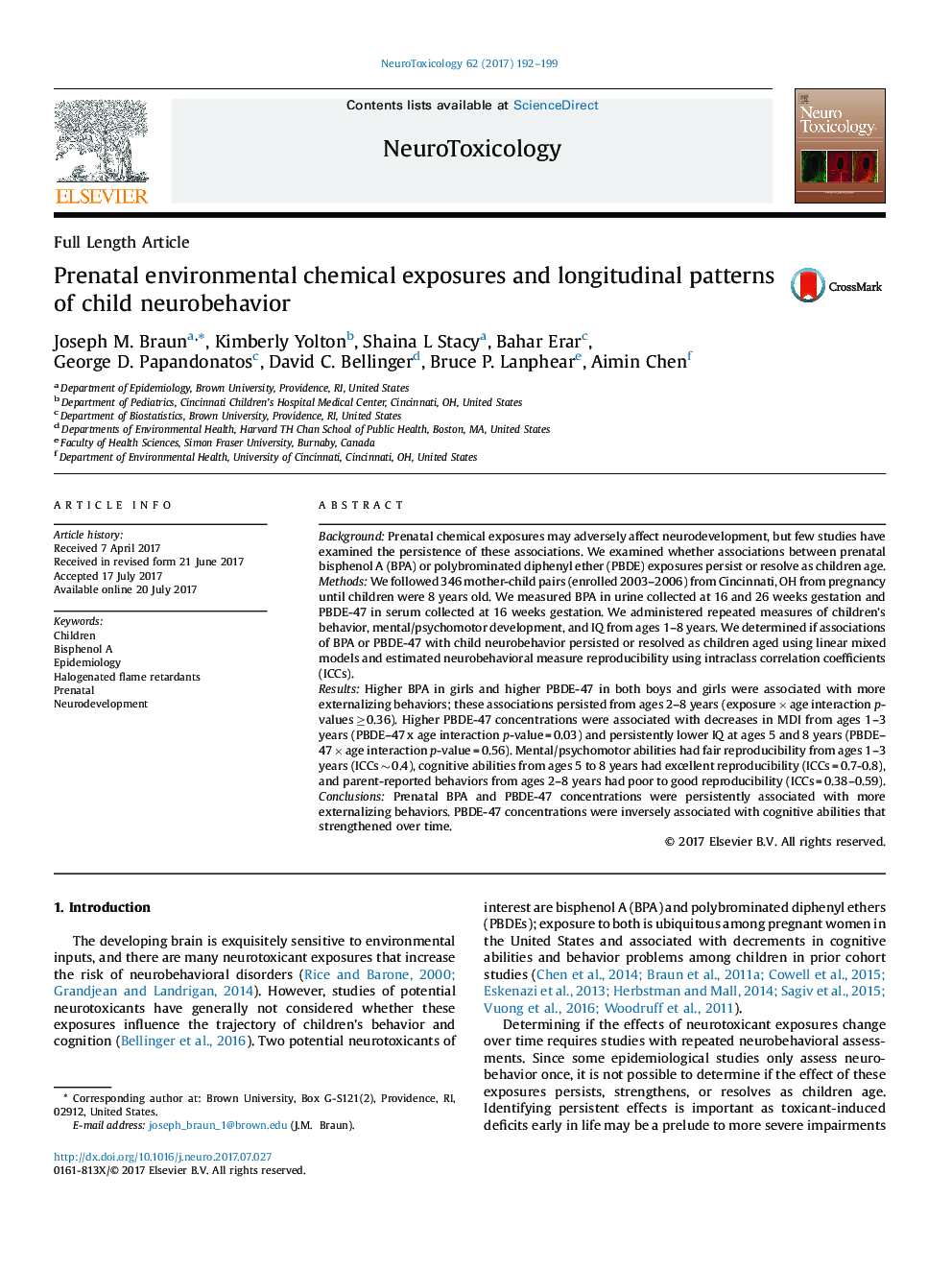| Article ID | Journal | Published Year | Pages | File Type |
|---|---|---|---|---|
| 5560803 | NeuroToxicology | 2017 | 8 Pages |
â¢Prenatal BPA and PBDE exposures were associated with more externalizing behaviors.â¢Prenatal PBDE exposure was associated with poorer cognitive abilities.â¢The association between PBDE and cognitive abilities strengthened as children aged.â¢Reproducibility of neurobehavioral measures from age 1-8 years varied by domain.
BackgroundPrenatal chemical exposures may adversely affect neurodevelopment, but few studies have examined the persistence of these associations. We examined whether associations between prenatal bisphenol A (BPA) or polybrominated diphenyl ether (PBDE) exposures persist or resolve as children age.MethodsWe followed 346 mother-child pairs (enrolled 2003-2006) from Cincinnati, OH from pregnancy until children were 8 years old. We measured BPA in urine collected at 16 and 26 weeks gestation and PBDE-47 in serum collected at 16 weeks gestation. We administered repeated measures of children's behavior, mental/psychomotor development, and IQ from ages 1-8 years. We determined if associations of BPA or PBDE-47 with child neurobehavior persisted or resolved as children aged using linear mixed models and estimated neurobehavioral measure reproducibility using intraclass correlation coefficients (ICCs).ResultsHigher BPA in girls and higher PBDE-47 in both boys and girls were associated with more externalizing behaviors; these associations persisted from ages 2-8 years (exposure Ã age interaction p-values â¥Â 0.36). Higher PBDE-47 concentrations were associated with decreases in MDI from ages 1-3 years (PBDE-47 x age interaction p-value = 0.03) and persistently lower IQ at ages 5 and 8 years (PBDE-47 Ã age interaction p-value = 0.56). Mental/psychomotor abilities had fair reproducibility from ages 1-3 years (ICCs â¼Â 0.4), cognitive abilities from ages 5 to 8 years had excellent reproducibility (ICCs = 0.7-0.8), and parent-reported behaviors from ages 2-8 years had poor to good reproducibility (ICCs = 0.38-0.59).ConclusionsPrenatal BPA and PBDE-47 concentrations were persistently associated with more externalizing behaviors. PBDE-47 concentrations were inversely associated with cognitive abilities that strengthened over time.
